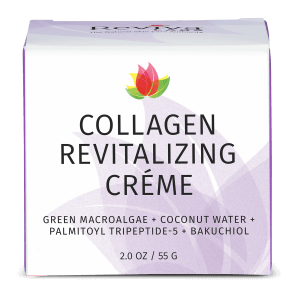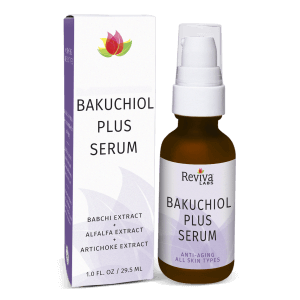Ingredients, Reviva Labs, Skin Care
Choosing the right Retinoid for Your Skin
Retinoids have become a cornerstone in skincare routines for their remarkable ability to rejuvenate the skin. Among the most popular retinoids used in skincare products are tretinoin, adapalene, and trifarotene. Since each of these retinoids have their own unique properties and benefits, it’s important to understand the differences so you can choose the right one for your skin.
Tretinoin
The active form of Vitamin A (Retinoic Acid), available by prescription. Tretinoin is highly effective but can be more irritating than other forms of retinol. It does not require conversion to be active and works directly upon application.
Tretinoin, is often hailed as the gold standard of retinoids due to its effectiveness in treating acne and reducing signs of aging. Derived from vitamin A, tretinoin works by increasing cell turnover and stimulating collagen production. This action helps diminish fine lines, wrinkles, and acne scars. Its potent effects make it a favorite for anyone looking to combat the visible signs of aging and improve their skin’s texture. A dermatologist will need to access which concentration of tretinoin would be best before prescribing it for your skin. When first using tretinoin, it’s important to start slowly. Its powerful action can sometimes lead to irritation, redness, and peeling, especially in the initial weeks of use.
Adapalene
A synthetic retinoid, available over the counter and by prescription, that is formulated to be less irritating. It is used primarily for acne treatment but also has anti-aging benefits.
Adapalene is a newer generation of retinoid that is specifically formulated to target acne. Known for being gentler on the skin when compared to tretinoin, it is an excellent choice for people with sensitive skin or those new to retinoids. Adapalene works by regulating skin cell turnover and reducing inflammation. Its milder nature means that adapalene can be used more frequently without causing significant irritation, making it a convenient option for long-term acne management.
Trifarotene
A potent synthetic retinoid available by prescription, used to treat acne. It can be more irritating than other retinoids but is effective for severe acne concerns.
Trifarotene is the latest addition to the retinoid family, specifically designed to target acne on both the face and body. It boasts a selective action on the skin’s retinoic acid receptors, which allows it to work effectively at lower concentrations, minimizing the risk of irritation. Prescribed by a healthcare provider, Trifarotene is particularly effective in treating large areas of acne, such as the chest and back, making it a versatile option for those dealing with widespread concerns. Its targeted approach helps to clear acne while also improving the overall texture and appearance of the skin.
Each of these retinoids brings its own set of benefits to the skincare table. Tretinoin is unmatched in its ability to reduce the appearance of aging, adapalene offers a gentle yet effective solution for acne-prone skin, and trifarotene introduces a targeted approach for treating acne on both the face and body. When incorporating any of these retinoids into your skincare regimen, it’s crucial to use sunscreen daily, as retinoids can make your skin more sensitive to the sun.
Choosing the right retinoid depends on your specific skin concerns and sensitivity. It’s also essential to introduce retinoids gradually into your skincare routine to minimize potential irritation. Start with a lower concentration and use it every other night, gradually increasing the frequency as your skin adjusts. Listening to your skin and adjusting your routine accordingly will help you harness the full power of these transformative ingredients.
As we navigate the complexities of skincare, it’s clear that retinoids, including tretinoin, adapalene, and trifarotene, offer valuable solutions for various skin issues. By understanding the unique properties and benefits of each, you can make informed decisions about your skincare routine, leading to healthier, more radiant skin. Remember, the journey to beautiful skin is a personal one, and what works for one person may not work for another. Experimenting with these retinoids under the guidance of a skincare professional can help you find the perfect match for your skin’s needs, bringing you one step closer to achieving your skincare goals.
Of course, if you’re looking for non-prescription based Vitamin A derived products, you can opt for a non-prescriptive retinol. Retinol is a derivative of vitamin A and it’s widely used in skincare for its ability to improve the appearance of fine lines, wrinkles, uneven skin tone, and texture. Retinol works by encouraging the skin’s natural cell turnover process, which helps to exfoliate the skin, reducing the appearance of aging and promoting a more youthful, radiant complexion.
Non-Prescription Retinols
Retinol is available in various formulations and strengths, ranging from gentle to more potent treatments. Here are some of the most popular retinol ingredients found in skincare products:
- Retinol: The most common form of vitamin A in over-the-counter skincare products. It is a whole molecule that must be converted into retinoic acid by the skin at the cellular level to be effective.
- Retinaldehyde (Retinal): A step closer to retinoic acid, retinaldehyde is more potent than retinol but less irritating than retinoic acid. It requires one conversion step to become retinoic acid in the skin.
- Retinyl Palmitate: A gentler, ester form of retinol, combined with palmitic acid. It’s less potent than retinol and is often found in products formulated for sensitive skin. It requires multiple conversion steps to become active.
- Retinyl Retinoate: A newer, hybrid molecule that combines retinol and retinoic acid, designed to offer the benefits of retinoic acid with less irritation. It is more stable and less irritating than traditional forms of retinol.
- Hydroxypinacolone Retinoate (HPR): A retinoic acid ester that does not require conversion to be effective. It’s claimed to provide retinoic acid-like benefits with less irritation, though more research is needed to fully understand its efficacy.
These ingredients vary in strength and efficacy, and the choice between them often depends on the individual’s skin type, concerns, and sensitivity. Starting with a lower concentration and gradually increasing the strength can help minimize potential irritation associated with retinol use. Reviva’s Advanced Retinol Serum offers 0.1% retinol, making it effective yet generally tolerable for a wide variety of skin types.









